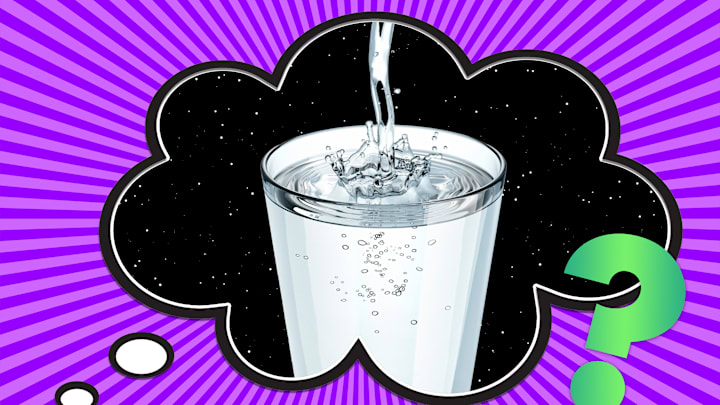Transporting anything to the International Space Station is expensive: Sending one gallon of water, for example, costs $83,000 [PDF]. Now consider that each of four astronauts on the ISS needs 12 gallons of water per day for drinking and other uses. NASA's bill would go into the stratosphere.
Tanks of H20 can't be constantly shipped to the International Space Station, so the station has a complex water system that squeezes every last drop of available, drinkable liquid out of the environment. That leaves astronauts drinking a filtered mixture that includes recycled shower water, old astronaut sweat, and pee. The station also keeps about 530 gallons of water in reserve in case of an emergency.
The NASA water systems on the ISS collect moisture from breath and sweat, urine from people and research animals, and runoff from sinks and showers to keep the station hydrated. “It tastes like bottled water, as long as you can psychologically get past the point that it’s recycled urine and condensate that comes out of the air,” Layne Carter, who manages the ISS water system from the Marshall Flight Center in Alabama, told Bloomberg Businessweek.
However, not all the ISS astronauts drink recycled urine. The ISS is split into two sections, one run by Russia, and one by the United States, and they have two different water systems. The U.S. system collects condensate, runoff, and urine to create about 3.6 gallons of drinkable water per day. However, the Russian astronauts drink water processed from only shower runoff and condensate, skipping the urine (producing slightly less than that 3.6 gallons). Occasionally, the NASA astronauts will go over to the Russian side of the ISS and grab the Russian supplies of urine to process it themselves. No need to waste potential water supplies!
In addition, the two sides of the ISS disinfect their water two different ways. Since 1981, NASA has been using iodine to disinfect water, a process that requires the water to be filtered since too much iodine can cause thyroid issues. Russia has been using silver to disinfect its water since the launch of the Mir station by the Soviet Union in 1986.
Discover More Facts About Humans in Space:
A version of this story was published in 2015; it has been updated for 2024.
